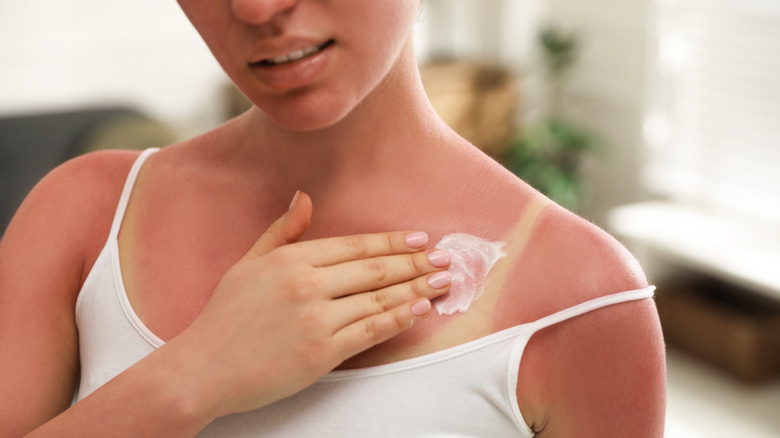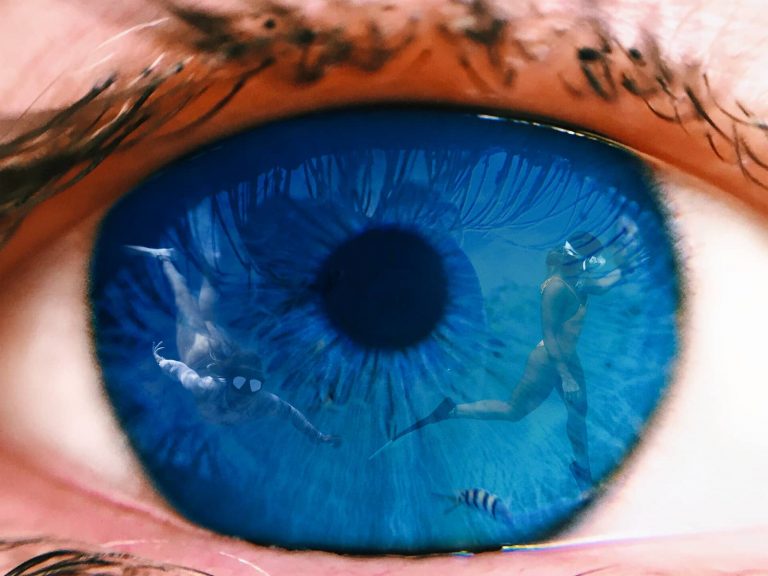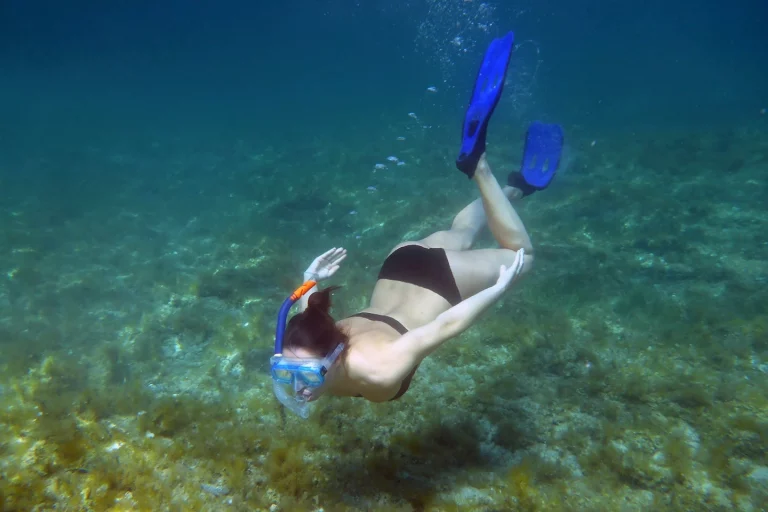Snorkeling in a tropical paradise can be a mesmerizing experience but can also expose you to the harsh sun. Imagine enjoying the colorful fish and corals under the water, only to find out later that your back is as red as a tomato! To avoid this unpleasant scenario, you need to know How to avoid sunburn while snorkeling?
Your skin needs extra care at the beach because the sun can cause pain and damage. That’s why we have prepared some useful tips and advice for you on shielding your skin from harmful UV rays, what kind of sun protection clothing you should wear when snorkeling, and what the best sunscreens are for the beach.
UV Protection on the Beach
Gradually increase the time spent in the sun and wear sunscreen to avoid sunburn.
Your skin needs daily protection from the sun’s harmful UV rays, but it is especially important when you are on the beach or doing water activities. If you plan a holiday in the sun, you need to prepare your skin for the intense sunlight. After spending the winter months with little sun exposure, your skin becomes pale and prone to burning.
Consider thinking you can get a bronze tan on the first day of your beach holiday! Start by spending only 10-20 minutes in the sun, wearing UV protective clothing and sunscreen with at least SPF 30.
Gradually increase the time and let your skin tan slowly without burning. Sun protection is even more important when you travel to a tropical destination in winter when your skin is more sensitive to strong sunlight than in summer.
What Does UV Protection Mean?
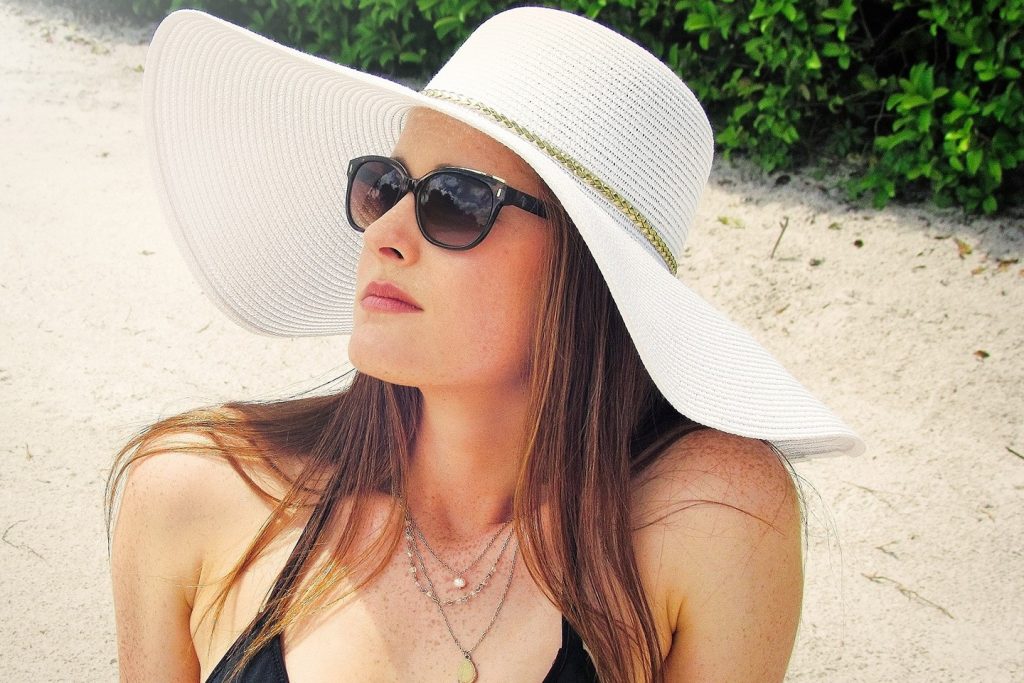
When planning a trip to the beach, remember to pack your sunglasses, sun hat, and high-SPF cream.
Sunlight has 3 different types of UV rays: UV-A, UV-B, and UV-C. You need to be aware of UVA and UVB rays because they can damage your skin. UVC rays are not a problem because they are blocked by the ozone layer.
UVA rays can make your skin age and wrinkle faster. They can also cause skin cancer. UVB rays can cause sunburn and increase the risk of skin cancer and melanoma.
You can prevent sun damage by following simple steps, including wearing UV protection clothes and sunglasses, applying sunscreen, and avoiding the sun at peak times. If you want to learn more about How to avoid sunburn while snorkeling? Keep reading!
What does UPF mean?
Ultraviolet Protection Factor measures how much UV rays can get through the fabric and shows how sun protective the clothing is. UPF is similar to the SPF rating for sun care products. It was developed by the American Society for Testing and Materials Committee.
The higher the UPF, the better the protection. UPF50 rating means only 1/50th of the UV can go through the fabric. In other words, it blocks about 95 % of the UV-B and 98 % of the UV-A rays.
How to avoid sunburn while snorkeling – 7 Sun Exposure Safety Tips
Snorkeling is a fun and relaxing way to explore the underwater world but it can also expose you to the sun’s harmful rays. Sunburn can ruin your snorkeling experience and cause long-term damage to your skin.
That’s why you need to know How to avoid sunburn while snorkeling – 7 Sun Exposure Safety Tips. This article will share some simple and effective ways to protect your skin from the sun while snorkeling, such as wearing UV protection clothing, applying sunscreen, avoiding peak hours, and more. By following these tips, you can enjoy snorkeling without worrying about sunburn.
1: Avoid Peak UV Radiation Hours
The sun is strongest between 10 am – 4 pm, so you should avoid direct exposure during these hours (even if it’s cloudy). The outside temperature does not tell you how strong the UV rays are; use your watch instead.
2: Cover Up
Hats, rashguards, umbrellas, and other physical barriers are better than sunscreen – for many reasons.
- Your rashguard will stay underwater.
- Many sunscreens, even those claiming to be “reef safe,” have chemicals that can harm coral.
- Most people need to apply more sunscreen.
3: Wear Sunglasses with UV protection
Sunglasses with UV protection reduce the damage that can cause vision problems (due to macular degeneration), early cataracts, and skin cancer around your eyes.
4: Don’t Forget Your Neck, Lips and Ears
Some of the most likely places to get skin cancer are the neck, hands, ears, lips, and face. Most of us are careful about applying sunscreen on our face and hands but may neglect the back of the neck, lips, and tips of the ears. The best way to avoid sun damage to these areas is to use a lip balm with SPF and wear a wide-brimmed hat.
- I prefer All Good’s natural lip balm with SPF because it uses (reef-safe) non-nano zinc oxide. I once bought a lip balm with chemical sunscreen, which irritated my lips so much that I almost went to the doctor.
- If you don’t like wearing a wide-brimmed hat, use reef-safe sunscreen to protect the back of your neck and the tips of your ears.
5: Do Sunscreen Shots With Your Buddy
Most people need to apply more sunscreen. Doctors advise using an amount that fills a shot glass to cover your body well. That means a 100 ml/3.5 oz bottle of sunscreen only lasts for three or four applications (another reason to get a rashguard – you can reuse it many times).
If you use sunscreen, ask your buddy to help put it on your back, shoulders, and other places you can’t reach easily. Make sure you put on sunscreen at least 30 minutes before sun exposure to let it soak into your skin.
6: Don’t Use Expired Sunscreen
Most sunscreens have a date on them that tells you when they expire. If you don’t see a date on the bottle but think it’s older than three years, don’t use it.
- Sunscreen can last up to three years, but it can go bad sooner if exposed to sunlight or high temperatures.
- Don’t leave sunscreen in your car or in the sun. When diving, wrap it in a towel and keep it in the coolest spot.
- Throw away any sunscreen that smells weird, has changed color, separated, or has lumps.
- When you get a new sunscreen, write the date (month and year) you bought it on the bottle with a permanent marker.
7: Use Natural, Reef-Safe Sunscreen
As we said before, a wide-brimmed hat and a long-sleeved rashguard with UV protection is the best way to protect your skin and the reef. If you can’t wear a hat and a rashy for some reason, please use a (really) reef-safe sunscreen.
Many common sunscreens have chemicals that harm coral – even the ones that say “reef safe.” A recent study found that coral can die from just one drop of Oxybenzone in 15 million liters (3.9 million gallons) of water, and some diving places don’t allow chemical sunscreens.
UV protection while snorkeling
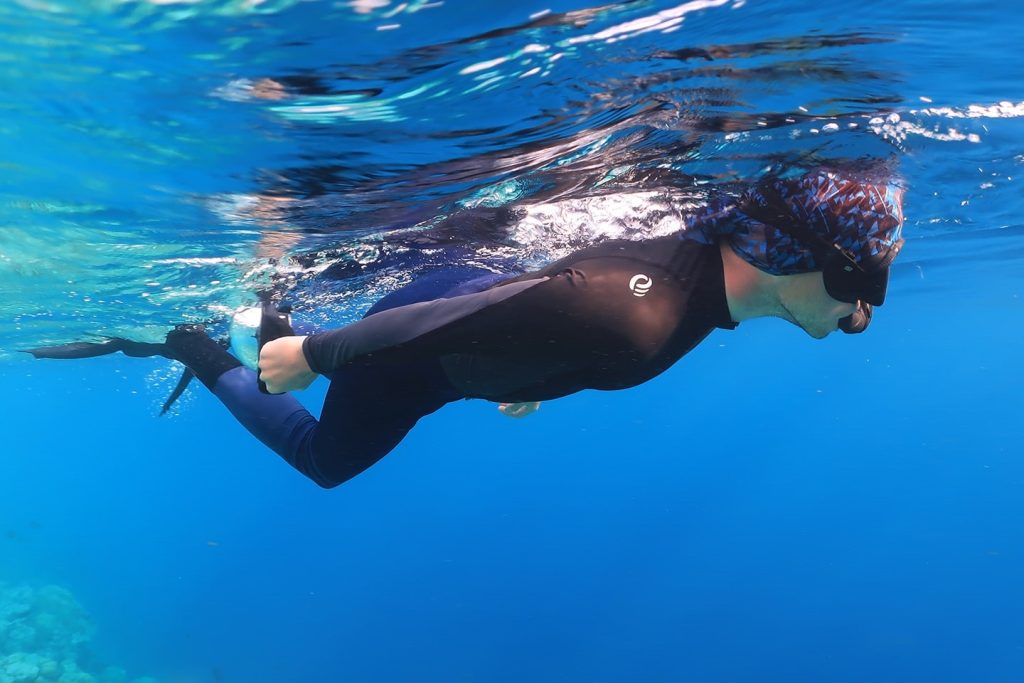
How to avoid sunburn while snorkeling? Snorkeling is a wonderful way to discover the beauty of the sea, but it also comes with a risk of sun damage. The water reflects and magnifies the sun’s rays on your skin, making you more prone to sunburn. To prevent this, wear UPF clothing and reef-safe sunscreen when you snorkel. UPF clothing shields most UV radiation from your skin, while reef-safe sunscreen protects the coral and fish from harmful ingredients. The most exposed parts of your body are the head, shoulders, waist, and calves, so wear a UPF swimsuit and a hat. Don’t let sunburn spoil your snorkeling experience!
UV protection clothing

Regarding sun protection, clothing is your first and most important shield. However, not all clothing effectively blocks the sun’s rays. For example, a regular white cotton T-shirt only has a UPF rating of about 5, which means it lets through most UV radiation. There needs to be more for staying in the sun for long periods, especially for snorkeling, where the water magnifies the sun exposure. Wear special UV protection clothing made of synthetic fabrics like lycra, nylon, or polyester to protect your skin from sun damage.
These fabrics have a tight weave and a high density that prevent the UV rays from reaching your skin. They also have other benefits, such as being lightweight, stretchy, and quick-drying. UV protection clothing comes in various forms, such as rash guards, suits, hats, and more. They are ideal for anyone who loves spending time on the beach or in the water. They also make great gifts for surfers, snorkelers, and divers who appreciate having more sun protection options.
O’Neill Long Sleeve Swim Shirt for Men
- snug fitting long sleeve rashguard
- flatlock seams for a soft and durable seam
- high-level UPF50+ protection
- lightweight, fast-drying, high-elasticity fabric
- available in various colors and different sizes
When it comes to UV clothing, you want to choose dark and vibrant colors. These colors can shield you from harmful UV rays better than light ones. You also want to ensure the fabric fits you well and doesn’t get stretched out or see-through. Otherwise, you might lose a lot of the sun protection that UV clothing offers. Whether snorkeling or just relaxing at the beach, look for UV clothing with a UPF rating of at least 30!

Rash guard for snorkeling
Sunburn can spoil a snorkeling holiday, so I always pack UV-protection clothing. Rash guards and swim shirts are ideal for water sports because they provide high-level sun protection and let you move freely. But what is a rash guard exactly? It’s clothing that protects you from irritation, rash, and sunburn when you are in the water. It’s made of stretchy, light, and comfortable spandex, polyester, and nylon fabric.
Kanu Surf Rashguard
- Long raglan sleeve rashguard for women
- Fast drying, machine wash possible
- UPF 50+ rating
- available in various colors and sizes (XS-XL)
Rash guards come from Australia, where they are known as rashies. They are popular for water activities like snorkeling, diving, and kitesurfing. They not only protect you from sun rays but also from jellyfish stings!
UPF swim shirts are usually more loose-fitting than rash guards but protect your skin from sun exposure. The more skin you cover with UV protection clothes, the better! That’s why we suggest getting UV protection long sleeve shirts, pants, or even a full-body UV protection suit.
Full Body Rash Guard
Enjoy the ultimate protection from chafing, sunburn, and stinging creatures with our FullBody Long-sleeve rash guard. This sleek and stylish garment covers your body in soft and stretchy lycra spandex, giving you a snug and comfortable fit.
Whether you are a woman or a man, you can choose from various colors and sizes to suit your preference and personality. Our FullBody Long-sleeve rash guard is the perfect companion for your water adventures.
Head sun protection
When you snorkel, your head is mostly exposed to the sun’s rays, which can quickly damage your scalp. Don’t rely on your hair to shield your skin from the sun; it is not enough to prevent sunburn.
Sunburn on your scalp can cause severe pain and risk of heatstroke. The skin on your neck and ears is also very vulnerable to the sun. That’s why you should always protect your head from the sun when you snorkel, even if you only plan to stay in the water for a short time.
Long Sleeve Sun Shirt With Hood
- Skin Cancer Foundation recommended products with UPF 50+
- comfortable fit with minimal seam placement
- perfect for any water activity like surfing, swimming, snorkeling, diving

There are many options to keep your head safe from the sun while snorkeling. You can choose a rash guard shirt or a full-body suit with a hood that covers your head. Or you can buy a separate head sun protection accessory, such as a swim cap or a swim bandana with UV protection. You can also use a simple sport headband that wraps around your head and protects it from the sun.
What sunscreen is the best for the beach
Now you are well aware of to know “How to avoid sunburn while snorkeling.” If you care about the reefs and the environment, you should be careful about what sun lotion you use when snorkeling. We recommend wearing a full-body rash guard as your main protection, so you don’t need to apply much or any sun lotion.
Avoid sun care products that contain harmful ingredients like Oxybenzone and octinoxate. They can damage the reefs and the marine life. Instead, choose mineral sunscreen that contains non-nano zinc oxide and/or Titanium-dioxide. Like the ThinkBaby Safe sunscreen or Raw Elements Natural Sunscreen products, they are safe and effective. You Can Read our Complete Guide About 3 Best snorkeling sunscreens (Reef Safe & Biodegradable)
FAQs
Conclusion
Snorkeling is a fun and relaxing activity that allows you to explore the underwater world. However, it also exposes you to the risk of sunburn, which can cause skin damage, pain, and even cancer. To avoid sunburn while snorkeling, you should follow some simple tips: wear sunscreen with a high SPF and reapply it frequently, wear protective clothing such as a rash guard or a wetsuit, wear a hat and sunglasses when not in the water, seek shade when possible, and drink plenty of water to stay hydrated. By taking these precautions, you can enjoy snorkeling without worrying about sunburn.????

